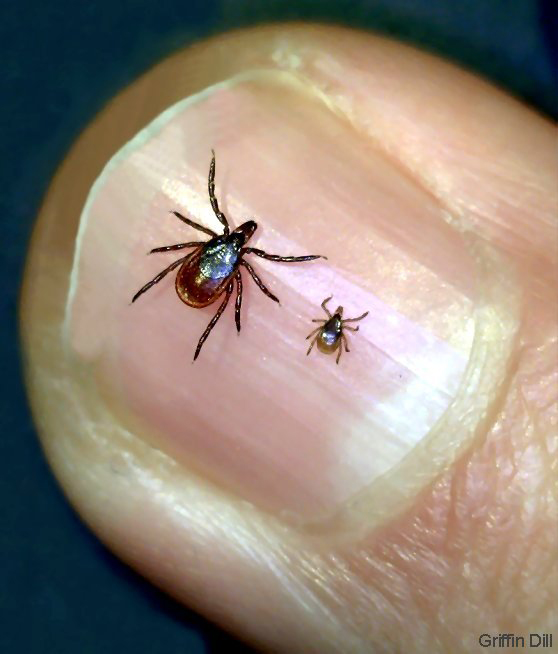Tick populations on the rise

Tick populations are on the rise and as we head into late summer, it’s important to be aware of the places where you are most likely to find ticks and how to prevent being bitten.
Here in New York State, several types of ticks are common. The Blacklegged or deer tick is well known as a carrier and spreader of several pathogens including Lyme Disease which make both humans and animals sick. The Lonestar tick can move quickly and also carries and spreads several pathogens including alpha-gal, which results in a red meat allergy for infected humans. Dog ticks are also common, and the Northeast Regional Center for Excellence in Vector-Borne Diseases (NEVBD) is warning of an invasive tick native to Eastern Asia called the Longhorned tick, which is now found in the eastern US.
Invasive populations of Longhorned ticks are mainly female and have the capability of reproducing without fertilization (you read that correctly), which means they can spread rapidly and reach high abundance. The Longhorned tick is a special threat to livestock and can reduce dairy production on cattle farms and occasionally kill calves. Longhorned ticks are cold tolerant and also bite humans.
Ticks like to live in woody, shrubby areas where there is tall grass and dead leaves, particularly along the edges of woods and forests. If you hike in these areas or your home landscape borders woods or tall grasses, make sure to do a full body check for ticks when you come back inside. Ticks are commonly found under the arms, around the ears, inside the belly button, behind the knees, between the legs, around the waist and in the hair.
The NEVBD says that showering after coming back inside can be an effective way to remove ticks.
There are also many ways to protect yourself from ticks while outside. EPA approved insect repellants are helpful. Look for active ingredients such as DEET, Picaridin, IR3535 or oil of lemon eucalyptus. Clothing should cover arms, legs and feet. Tuck the legs of your pants into socks to block ticks. Permethrin is a repellant that kills ticks on contact and can be used on clothing. Do not use Permethrin directly on skin.
Check outdoor pets regularly for ticks and ask your vet about tick prevention products. Check your gear after hiking and camping, items such as backpacks and boots, which can bring ticks into the home. Clothing can be placed in the dryer on high for 10-20 minutes to kill any ticks.
Remember, too, that rodents as well as raccoons and deer carry ticks. If they are around your home, they can bring ticks into your yard and garden. Remove dead leaves, tall grasses and brush from around your home. Wood chips or gravel can create a barrier between your lawn and wooded areas. Keep your lawn mowed, and if you stack wood for fireplaces and stoves, do so neatly in a dry area to discourage rodents.
Finally, NEVBD recommends keeping playground equipment, patios and decks away from wooded areas in your yard.



